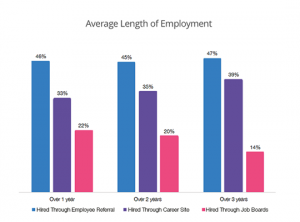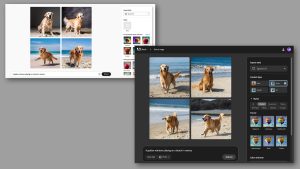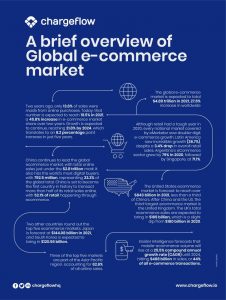Scale content creation, outmaneuver competitors and intuitively map reader journeys using ChatGPT.
ChatGPT has solidified its position within the marketing community, and the mass adoption proves it’s not going anywhere but up. While most view it as a way to generate new content, I look at it to help streamline and organize my own brainstorming — especially for enhancing my content strategies.
Here’s how marketers like you can leverage ChatGPT and take your content strategy up a few notches without any additional investment.
1. Use your content to create more
Tailoring content to suit personas involved in the B2B purchasing process is quickly becoming the norm. Yet, most marketing teams will put significant amounts of effort toward creating unique content based on the input and direction of a few (if you’re lucky) internal SMEs. This makes these teams glorified order-takers instead of the strategic directors the company needs.
Let’s assume you have a handful of solid, SME-approved content that everyone is quite proud of. How do you scale this operation without overstaying your welcome with SMEs who have full-time jobs? Generative AI.
Let’s take pillar pages, for example. Usually, they are built from various inputs from SMEs, executives and market research to showcase your knowledge and appease search engine algorithms. Yet, it is still only one piece of content for a specific reader. It doesn’t have to be. A single piece of content like this can become a powerful content foundation. One that can address the entire spectrum of a buying committee’s concerns.
How do you do this? First, identify the key personas involved with the discovery, influence and buying processes.
For instance, an in-depth, chunky whitepaper on cybersecurity can be reframed to highlight financial implications for CFOs, operational efficiencies for CTOs and compliance concerns for legal advisors. This method of breaking down and repositioning amplifies the reach and relevance of your core message comprehensively.
Traditionally marketing teams would have to rely on allocating significant resources to get this going, often taking weeks to months to create. This is where ChatGPT can help drive some efficiency when breaking down a pillar piece based on your target personas.
Example ChatGPT prompt
- “Take the following article from {insert URL} and generate uniquely tailored summaries that cater directly to the business interests of [Persona 1] emphasizing the unique value propositions relevant to each. Then based on the summary, offer a comprehensive outline on the same topic through the perspective of [Persona 1] without duplicating any content.”
2. Use competitor content against them
Strategic insight and market intel can be researched based on what your competitors are saying and what they aren’t. Identifying gaps in their content lets you position your brand as the go-to place that offers the only full-spectrum view of any topic your audience wants to get smarter in. This method is far less complicated than breaking down your content and rebuilding it through a new lens.
To do this, identify and examine the digital footprint of your strongest competitors to uncover who is worth going toe-to-toe with. I don’t mean this in an abrasive or even competitive way. My point is that if you’re leveraging competing content, it should at least be good. Once you find some high-quality, relevant content, ChatGPT will quickly become your best brainstorming friend.
To do this, copy the article URL you want to dissect. Then, head over to ChatGPT Plus and paste the following prompt:
- “Read through the following URL and give me 3 to 5 topics that directly relate to this article, but are not present within the content of this article. Ensure that these topics are relevant to the ideal reader who would find this content valuable. Please verify that you clearly understand the request before proceeding. URL: {paste url here}“
3. Intuitive journey development
Crafting a seamless journey in all your content becomes even more important as you introduce new narratives and perspectives. ChatGPT can easily help you brainstorm and even offer topics for the direction of subsequent pieces by helping shed light on the reader’s mental state when they’re finished with the initial content.
Always layer in behavioral data from website analytics showing where users usually head after reading a piece. For newer pieces that don’t have that data, ChatGPT can help solidify your hypothesis of what makes the most logical next step for the reader.
Use AI to help map out the journey from new content pieces by considering the logical progression of user interest. For example, an article about the basics of machine learning could naturally lead to deeper dives into algorithms, ethical considerations or industry-specific applications. Use ChatGPT to help brainstorm these pathways and you may find you have an existing piece of content that perfectly serves as the next step.
Example ChatGPT prompt
- “Based on the themes explored in [content piece URL], identify realistic follow-up topics or questions likely to arise in the reader’s mind after finishing [content piece title] and help guide the development of our next content piece.”
Evolving your content strategy with ChatGPT
ChatGPT is one tool with countless use cases for anyone looking to leverage words. For B2B marketers who often face declining budgets and resources, it can be a solid supplement to any tech stack when you learn the best ways to use it. Integrating these prompts into your content generation workflow can unlock a new level of efficiency and creativity.
Sure, it will take some iterations and trial and error until you find what works. But when you tap into the power of these tools, you amplify your capabilities in ways that were not possible before.
The post 3 proven ways to use ChatGPT to beef up your content strategy appeared first on MarTech.
MarTech(3)








